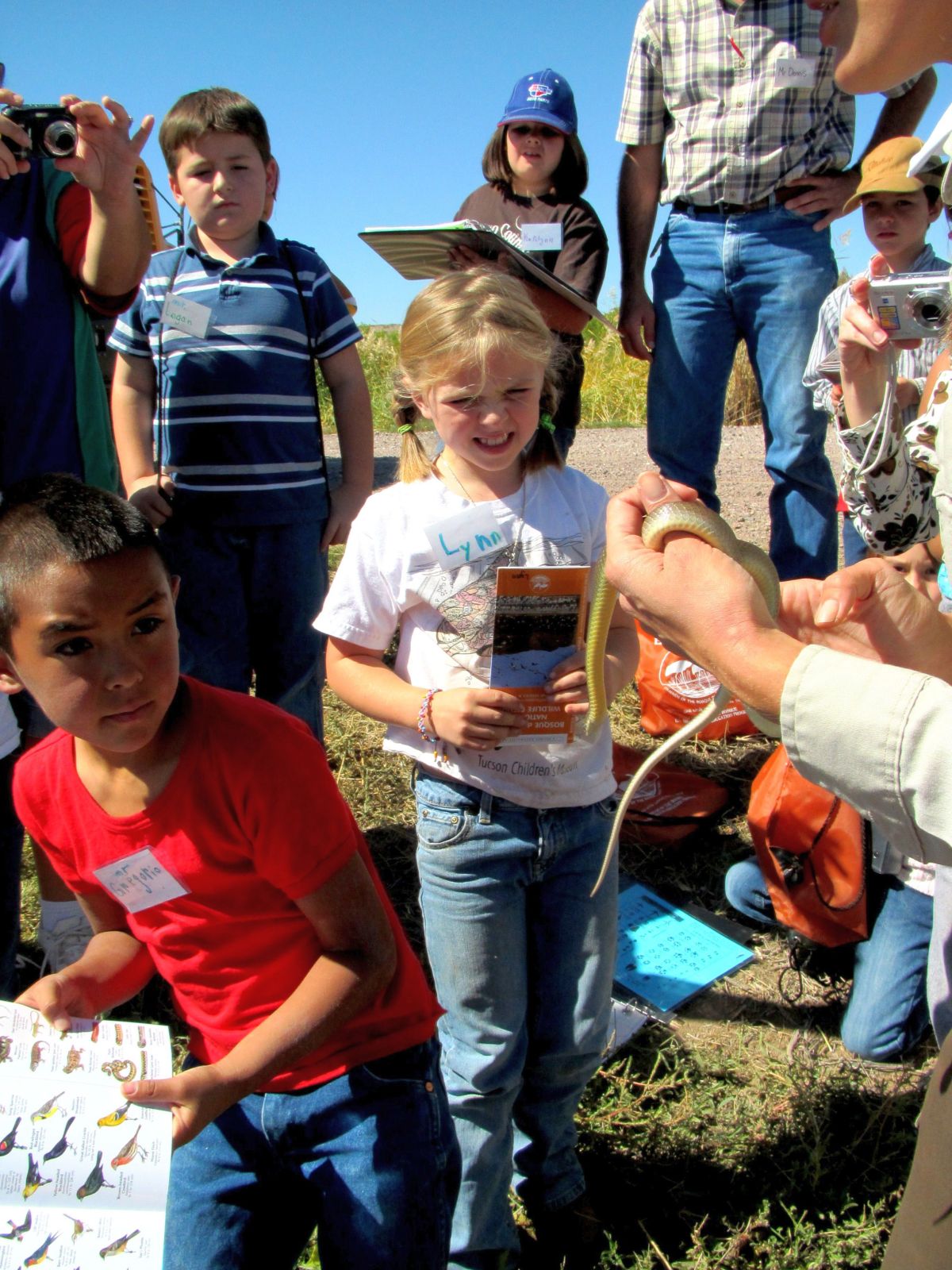
It’s not just snakes. Other wild creatures inspire exaggerated fears, too: bats, spiders, birds, fish – yes, even fish.
In the course of greeting tens of thousands of visitors a year, rangers on national wildlife refuges bump up against many such bugbears. They know which natural-world denizens invariably make some people flinch or go “Ewww!”
Whether it’s because today’s visitors tend to live more indoor lives than past generations or watch too many TV survival shows, fears of nature are flourishing — in all ages.
“We see more and more children (and adults) in our programs at the Visitor Center unaware of what native wildlife species are found on the refuge and in their own backyard,” says Teresa Adams, a park ranger at Wheeler National Wildlife Refuge in Decatur. “We try to show them the wonders of nature while educating them on what to expect and how to react to wildlife.”
To help anxious visitors, refuge staffers across the United States share some proven tactics.
Admit to fears of their own. Visitors may be surprised to hear refuge staffers aren’t all fearless.
Find out what they know. At Patuxent Refuge outside Washington, D.C., staffer Laurel Harrison asks visitors softball questions: “Do you spend any time outside? What’s your favorite animal?” Then she moves to the hard stuff: “Are there any animals you’re worried about?”
Don’t dissemble. To a child nervous about snakes, Harrison offers, ‘Just so you know, there are snakes at Patuxent, but I almost never get to see any. That’s because they’re shy, and they can feel the ground tremble, and they go and hide when they hear people coming.”
Never feed a wild animal. Says ranger Toni Westland of Florida’s J.N. “Ding” Darling Refuge, “If fed, they lose their fear of humans, so we do a ton of education about not feeding alligators.” Also ill-advised: getting too close, crouching at the water’s edge (you look smaller), turning your back or challenging a basking gator for rights to a path. Even if you were there first, go around the gator.
Contain nervous adults. Says Dave Sagan, visitor services specialist at Great Swamp Refuge, “I allow the adults to be nervous if they like but not to show it in front of the kids so they do not develop the same fear for no reason.”
Let kids adjust at their own pace. In classroom demos, Harrison lets kids decide if they want to touch a live frog or snake. “I have sometimes had parents take a child’s hand and say, ‘Touch it, touch it.’ And I have to say, ‘Remember, we want to empower kids to say ‘no.’ So when they say it, we have to respect it.’”
Show enthusiasm. “We have a Summer Day Camp program where kids come to the refuge and spend a day with a ranger doing lots of fun and interesting outdoor activities,” says Adams. “This gives us an opportunity to expose the kids in a safe way to all sorts of bugs, fish, reptiles, amphibians, plants, birds and mammals. They get dirty and wet and they love it!”




